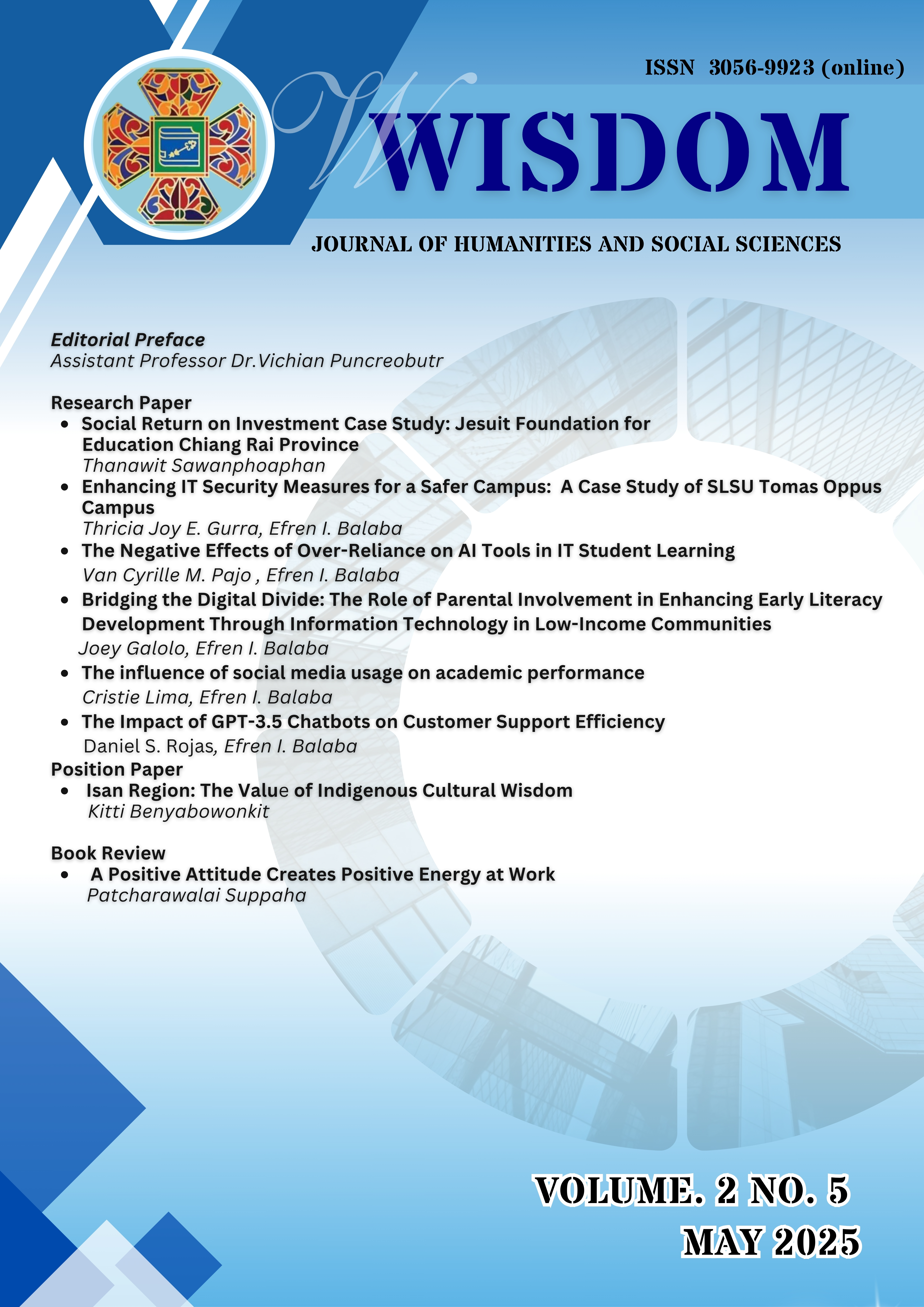Enhancing IT Security Measures for a Safer Campus: A Case Study of SLSU Tomas Oppus Campus
Keywords:
Cybersecurity, AI-Powered, Security Measures IntroductionAbstract
As educational institutions increasingly rely on digital platforms, robust IT security becomes critical. This study examines the cybersecurity posture of Southern Leyte State University – Tomas Oppus Campus to evaluate how effectively it protects its community and to identify improvement areas. Data were collected through surveys and interviews with students, faculty, and IT staff, complemented by a thorough security audit.
Findings revealed several key concerns, including outdated software, limited awareness of emerging cyber threats, and underuse of essential tools like multi-factor authentication and AI-based threat detection. While most participants understood basic online safety, many lacked knowledge of advanced cybersecurity practices.
The study highlights the urgent need for a tailored, modern cybersecurity strategy for the campus. Recommendations include system upgrades, enhanced security policies, and regular training to raise awareness at all user levels. Implementing these measures will strengthen the university’s digital defenses and create a safer online environment for its academic community.
The research concludes with practical, scalable recommendations applicable not only to Southern Leyte State University but also adaptable for other educational institutions facing similar cybersecurity challenges. These proactive efforts are vital to building resilient and secure digital infrastructure amid the dynamic evolution of higher education technology.
References
Alotaibi, A., Smith, K., & Reyes, M. (2024). The impact of cybersecurity training on reducing cyberattacks in academic institutions. Journal of Educational Technology and Security, 12(1), 45–59.
Amin, M., Lopez, J., & Tan, R. (2023). Security risks in digital learning environments: A study of university systems. International Journal of Cybersecurity Research, 9(3), 77–91.
Brunner, C., & De Leon, M. (2020). Cyber hygiene and awareness in higher education institutions. Academic IT & Data Security, 5(1), 12–24.
Center for Internet Security. (2022). CIS controls: A prioritized set of cybersecurity best practices. Retrieved from https://www.cisecurity.org/controls/
Garcia, D., Kim, S., & Villanueva, A. (2021). The effectiveness of multi-factor authentication in university IT systems. Information Management Journal, 11(2), 33–47.
Lee, H., & Tan, M. (2020). AI-driven threat detection in cybersecurity: Applications in education. Journal of Emerging Technologies in Learning, 15(7), 99–110.
Nagy, P., & Peppard, J. (2023). Hands-on cybersecurity education for academic communities. Cybersecurity Education Review, 8(2), 20–35.
Smith, L., & Jones, R. (2022). Outdated security policies and their impact on educational institutions. Journal of Information Security, 15(4), 102–117.
National Institute of Standards and Technology (NIST). (2021). Framework for improving critical infrastructure cybersecurity (Version 1.1). U.S. Department of Commerce. https://www.nist.gov/cyberframework
World Bank. (2023). Digital resilience in education systems: Protecting learning in a connected world. Washington, DC: World Bank Publications




